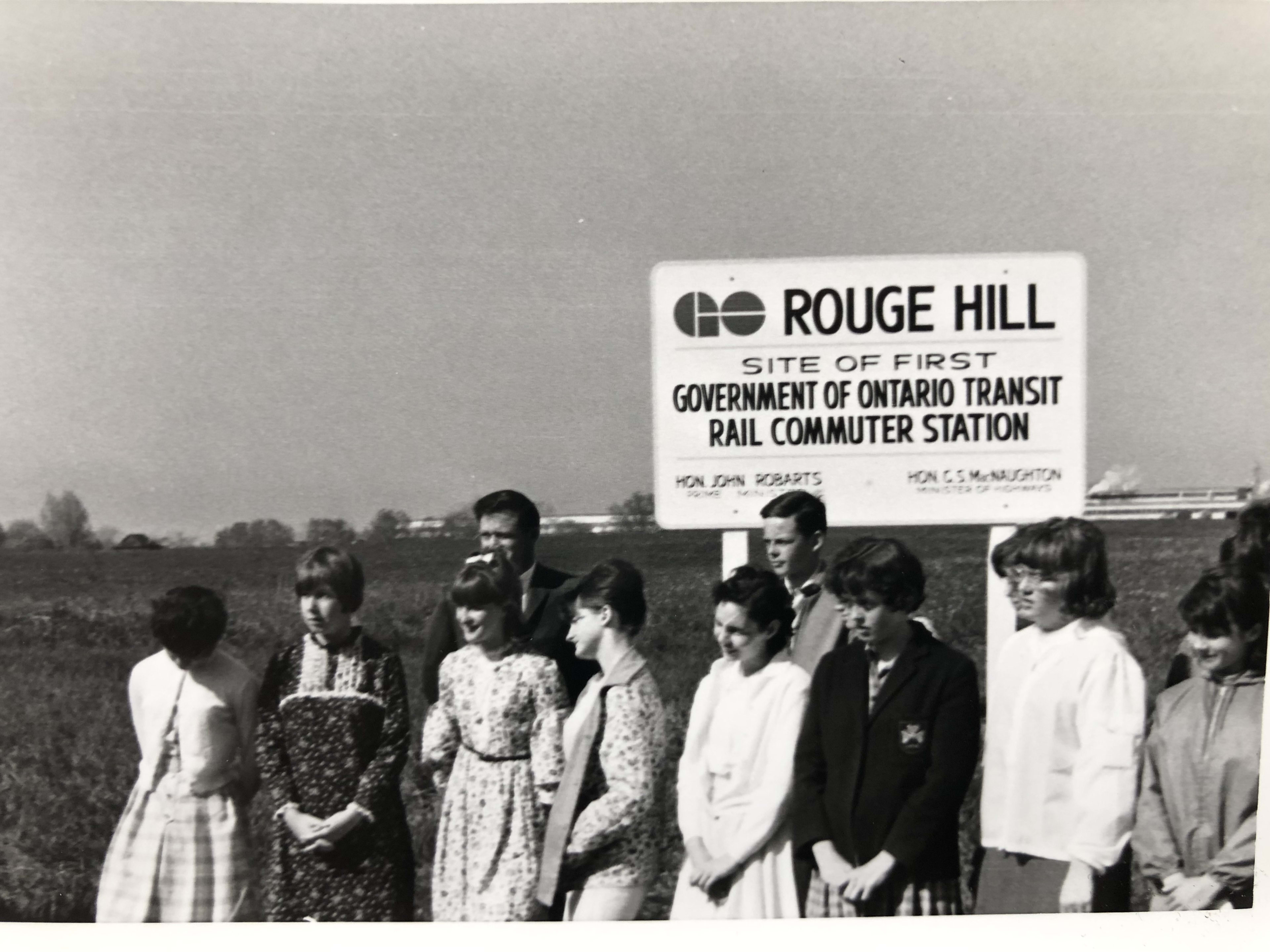See a 1966 class trip to an early Rouge Hill GO Station
Here's the backstory to images of the official ceremonial start of Rouge Hill Station construction.
Nov 7, 2019
Before the first GO trains or buses collected a single passenger, the transit industry heralded a new technological dawn for moving people around Toronto.
Among the innovations to come, noted a 1966 issue of the trade magazine, Canadian Rail – beyond powerful 3,000 horsepower GO train engines and creature comforts for customers, including new ‘bucket seats’ – was a ‘kiss and ride’ area built into the soon to be built Rouge Hill station.
A group of students gather to listen to speeches, and watch a tractor turn up a section of grass, during a ceremony to mark the start of construction on the Rouge Hill GO station. (Metrolinx photo)
The special drive-through lane would be intended, the magazine pointed out: ”For wives to pick up and drop off commuter husbands.”
While that explanation will stand out against today’s social and demographic norms, Rouge Hill was actually ahead of its time when sod was turned in early 1966.
From an envelope in a pile of files, stacked in a Union Station storage room, we’ve pulled a series of small, black and white photos of the day a tractor pulled up that section of rural grass. The story goes that local media were upset they weren’t given enough notice to send someone to cover the event. But on hand, as shown in the images, are a group of smartly-dressed youngsters, brought in from an area school.
It may not have seemed that exciting, with a short move of a tractor and speeches that took place in the remote location – the nearest rail crossing was used by farmers, and had no legal status. That meant it had no safety equipment.
But what the students witnessed that day was the start of construction of a station that was intended to become a prototype for GO Transit stops that did follow. It was the innovator and led the way in design of stations that now serve more than 56 million passenger trips each year.
The station – located at 6251 Lawrence Ave. E., in Scarborough – would be built a short distance from a small CN yard that once served as a staging-area for helper engines aiding freight trains in overcoming the steep grades around the Scarborough Bluffs.
Built on three acres, on what would become the Lakeshore East line, the $60,000 Rouge Hill station included a feeder bus loop, parking for 100 cars, a ticket office and a 1,300 square metre train platform.
What the Rouge Hill GO station would look like, according to the September 1966 edition of Canadian Rail magazine. (Photo courtesy Canadian Rail magazine)
What users were promised in 1966 of the GO Transit journeys to come – Rouge Hill station would open in May, 1967 – were not trips on hard-benched train coaches bound for Union Station, but a modern experience marketed inside the pages of Canadian Rail, as ‘traveliving’.
This 1966 rendering of a GO train was among the first glimpses the public would see of the future of mass transit in Ontario. (Photo courtesy Canadian Rail magazine)
It’s a wonder how many of the students gathered in the field on that day would become – and perhaps still are – regular customers for the transit agency they witnessed the birth of. Though, agreed, it may have seemed a bit unexciting at the time.
by Thane Burnett Manager of editorial content for Metrolinx
